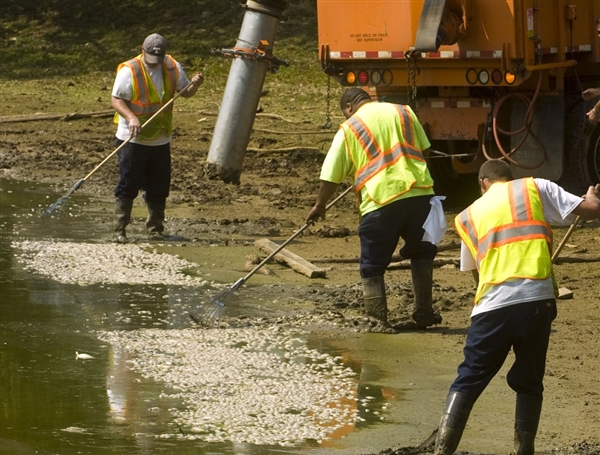
© J. Miles Cary/Knoxville News Sentinel/APCrews using rakes and an industrial vacuum remove dead fish from Butterfly Lake in Knoxville, Tenn., on Monday. Some 10,000 bluegills died.
In lakes and rivers across parched areas of the U.S., heat and lower water levels are reducing oxygen levels -- and killing fish populations by the thousands.
At one lake in Delaware, up to 6,000 dead gizzard shad and 600 perch were found floating this week.
"Aggravating this summertime problem, increased temperatures lead to warmer water, which holds less dissolved oxygen," state natural resources spokesman John Clark told NBCPhiladelphia.com.
In South Carolina, some 500 fish died at Lake Hartwell.
"It started Sunday afternoon," local resident Brandi Pierce told NBC affiliate WYFF-TV. "We started seeing ten fish popping up out of the water. Then Monday, it was full."
Across South Dakota, fishermen have reported thousands of fish kills in multiple lakes and rivers.


Comment: They're blamed on heat, blamed on cold, yet often these fish kills remain a real mystery...
More dead fish found in Arkansas River
Unprecedented fish kill in St. Johns: Fish kill isn't related to annual cycle
Glen Ellyn resident fears 'fish kill' not natural
Australia: Fish kill remains a mystery
Mysterious fish kill under investigation in Kuwait
Ireland: Big Fish-Kill on Bandon
...Sott.net investigates:
Reign of Fire: Meteorites, Wildfires, Planetary Chaos and the Sixth Extinction